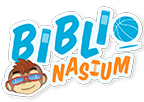IT Updates
Refresh Cycle & New Computers
Now is the time of year when we start thinking about refreshing devices, much of which actually takes place during the summer while staff is off. This year's process has begun with a refresh of some teacher laptops. This has raised some questions about who gets a new computer and when. I want to take some time to go over the refresh cycle to give some clarity regarding our device cycles.
First, it is important to understand that all district-owned devices go through a different lifespan depending on the type of use. Below is the "goal" or minimum lifespan of some of the devices in the district.
Chromebooks
|
Teacher MacBooks
|
iMac/PC Labs
|
District Office &
Operations PCs |
Infrastructure
|
3 years
|
5 years
|
5-6 years
|
5-6 years
|
5 years
|
In other words, this is the minimum amount time we expect most devices in the category to last with normal wear and tear before even considering replacement. This is based on combination of experience and budget projections/planning. As stated above, this is a goal or "best-case" scenario. The reality is that usually we begin refreshing devices as we can afford which may mean waiting an additional year for replacement.
Additionally, we try to squeeze all the life out of them we can by reallocating the computers from areas that are direct student instruction or mission-critical operations (Tier 1) to lower use, student support, or "part-time" areas (Tier 2) where we can often get another 2 years or so of life before they are eventually discharged entirely.
While it might seem at times like certain people are getting new items or maybe the computers you use seem really old, we do our best to ensure district devices are fairly and equally distributed and refreshed. We also try to ensure we are getting as much use out of them as possible and only purchase devices that fit sustainably within our budget. While we are forced to refresh labs in their entirety (which is a huge cost!), we refresh staff machines and student Chromebooks on a rolling basis as the budget allows. To get a general idea of where any device fits on this cycle, one need only pull up the specs and see where you fall based on the table above.
In the Mac example here, I've pulled up the "About this Mac" from the Apple icon and you can see that this is a mid-2012 MacBook. One important note is that this date refers to manufacture not purchase which is usually 6 months later at the beginning of the next year (so really 2013). According to the table above, that means this lap is due for refresh in SY2018. This example was used because it is currently teacher laptops that are being refreshed.
Open Educational Resources
CC Search
In an effort to promote Open Educational Resources (OERs), I try to occasionally feature a good tool for teachers to use to access CC content. CC content -- unlike copyrighted material -- is free and open to use as long as you follow your English teacher's advice and "Cite your sources!" or more accurately provide attribution to the authors involved. Other than that, you are generally able to mix and match, adapt and edit, and so forth as needed.If this is all new to you, think about how a resource text is bound under copyright. If you want more copies, you have to buy more. If you want to take out a section that is outdated or inaccurate by current standards, you can't. You're stuck with an expensive, as-is text. If you were to go the other route and write your own text from scratch, it would be better but how long would that take? An OER text gets you 75% of the way there; you add, subtract or edit as necessary and BOOM, you've got a perfectly aligned text (or resource) before you turn grey.
If I had to think of a CC tool I use all the time, it has to be CC Search. Basically, CC Search is the Google of OER resources. It searches a bunch of OER sites simultaneously so you don't have to remember which site has a certain type of resources. Say you're wondering, "What's that photo site again that has CC photos I can use for free?... Flyer...Floto....Flotsom..?" (It's Flickr by the way).
Just bookmark CC Search and it will do the searching (and remembering) for you.
Tips
Find & Replace
In terms of indispensable keyboard shortcuts, everybody knows cut (cmd + x), copy (cmd + c), and paste (cmd + v). You might even know that (cmd + k) takes selected text and makes it a link, but do you know about cmd + f?
Find (cmd + f) is a search tool I use daily to quickly find text. Here are some examples:
A. Say I get a 80 page pdf of standards and benchmarks and I am only looking for a standard on mitosis. Instead of wasting time scanning the document for that word, I would simply type it into the search box, hit enter and it would jump to the first instance of that word.
B. Or maybe I have spreadsheet or webpage open with a huge roster of names like an entire grade or multiple grades and I want to find a particular student. If I'm lucky, it's in alpha order and I can scroll but it doesn't matter if I just do a 'Find' for that student's name. It's just quicker than scrolling.
C. Finally, the find tool also comes with a replace option in things you can edit. (In gDocs you need to click those three little dots to get it to show up). So imagine I discovered that in a document I was keeping as notes, I had spelled Keven's name wrong (a lot!) and needed to get that "i" in there. Well, being it was a lot of notes, I've got 22 pages to scroll through and read OR I would type the error "Keven" in the find box and the correct spelling "Kevin" into the replace box and hit enter. BOOM! All of the mistakes are fixed.
** If you're using a PC on Windows or Linux, it is ctrl + f.























